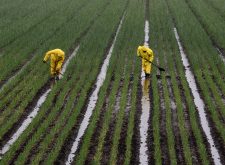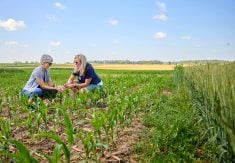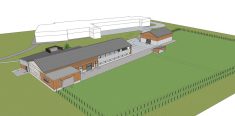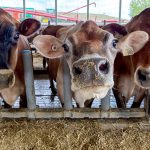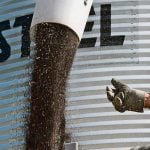The last two years have been a whirlwind for Harvest Genomics CEO and co-founder Chris Grainger. After his Guelph-based start-up won the University of Guelph Gryphon’s LAAIR pitch competition in 2020, the company has been on a rapid growth trajectory.
Launching a business in the middle of a pandemic was not without its challenges, but it had an unexpected silver lining for the company, which offers rapid genetic testing for agriculture that previously was only available in lab settings.
Why it matters: Genomics technology makes it easier and faster to detect and monitor new diseases and pests. It can also make plant and animal breeding more accurate and quicker.
Read Also

FCC partners with major Toronto innovation hub
A FCC parntership with MaRS Discovery District aims to solve technology problems in food supply chains.
“It’s been a surreal experience, but the whole world has been given a short course in genetic testing. Who doesn’t know what a PCR test means now?” he asks.
“It’s an easier conversation now because you can make analogies to COVID-19 and human health care. We’re extending that to agriculture; plants and animals get sick, and we can use the technology to develop rapid screening tests to mitigate outbreaks.”
The Gryphon’s LAAIR win helped Harvest Genomics make new connections in the agriculture industry, including the ability to partner with researchers at the Ontario Ministry of Agriculture, Food and Rural Affairs and Agriculture and Agri-Food Canada to develop a new test for early detection of Tomato Brown Rugose Fruit Virus (ToBRFV).
ToBRFV is an emerging plant virus that affects tomato and pepper crops, and Ontario’s greenhouse industry has been on high alert since it was first detected in the province in 2019. The virus can spread rapidly before symptoms are visible, so early detection with Harvest Genomics’ swab test kit is an important part of the industry’s response.
Grainger also made a connection with another Guelph-based start-up, Rancho Nexo, which specializes in bringing Canadian agricultural technologies to Mexico and Latin America. Through Rancho Nexo, Harvest Genomics participated in the GreenTech Americas horticulture expo at the end of April in hopes of expanding its market footprint.
“This is the era we are in with rapid molecular testing. We have the tools available to be used, so we need to get them out there to front-end producers to do early-stage detection,” he says, adding the technology could also help with early detection of livestock diseases like avian influenza or African swine fever.
Harvest Genomics also works on genetic testing for herbicide-resistant weeds, offering rapid screening for different mutations related to resistance to different herbicides in Ontario. Pandemic-driven border closures and travel restrictions have boosted government appetites for more domestic testing and screening capacity, Grainger says.
His team works with seed companies to speed up crop and variety development to get new crop varieties to market faster and more efficiently. A large part of Harvest Genomics’ business model is to make this type of technology more widely available so it can be accessed by smaller, more specialized companies as well as larger, well-funded multinationals.
“We are the 23andMe of plants. We sequence these crop genomes and use the information with breeders to help accumulate or stack the most favourable genes in a natural way to help breed new varieties with disease resistance, drought resilience or other climate change impacts,” he says.
Most recently, the company has received a grant from SmartGrowth, a FedDev Ontario-funded program administered by Bioenterprise Canada. This will support further development of genomic tools for food production and food safety.
Technological advances mean the capacity now exists to take complex samples of soil or water and extract and sequence DNA from every organism at the same time to identify and detect pathogens.
“It’s a golden era for genomic technologies. We’ve been populating databases for 20 years and now we have enough information to make them useful. The cost prohibitive nature of this testing has been removed and that’s game-changing,” Grainger says.
“Faster testing is faster decision-making, especially when it comes to preventing pandemics.”




